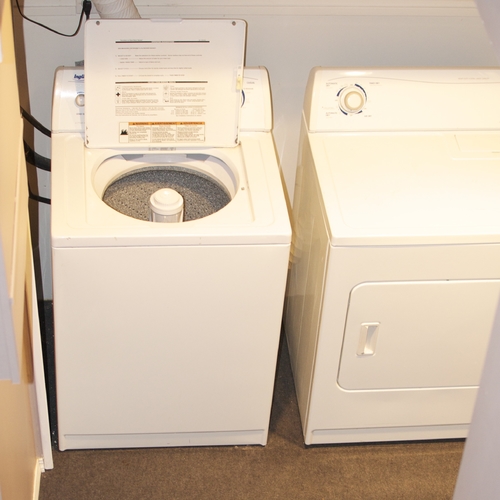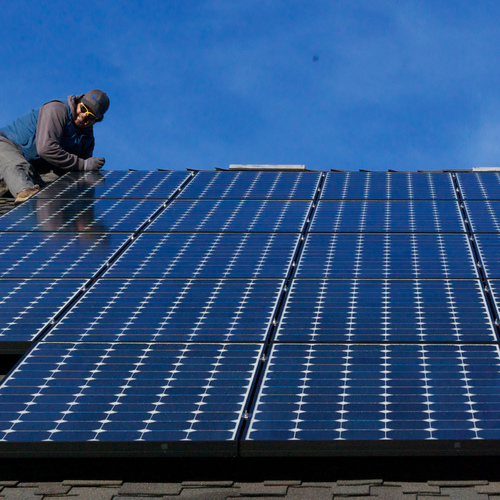
Image Credit: Wikimedia Commons
Residential customers of the city-owned electric utility in Redding, California, will see their monthly access fees rise from $13 to $42 under a plan designed to pay the utility’s fixed costs in an era of increased solar and wind renewable generation.
Energy charges would fall from 15 cents to 12 cents per kilowatt-hour.
Redding Electric Utility Director Barry Tippin said that the new rate structure was designed to be revenue-neutral while guaranteeing the utility would be able to cover fixed costs of the system. “Our attempt here is to have a zero percent increase in utility revenue in total,” he said. “The higher fixed charge is offset by a 20 percent reduction in the energy charge.
“Our thinking was that regardless of who you are, you have a demand on that system. Whether you’re using alternative sources or you’re using just the grid as its historically been done, you have a demand on those wires and those poles, and everybody should be sharing in that cost.”
The city council will be asked next month to schedule a public hearing on the plan; that hearing would probably come in August. In the interim, the utility will be explaining the proposal to its 38,000 residential and 8,000 commercial customers.
Redding is a city of about 90,000 in northern California about 100 miles south of the California-Oregon border.
Utility wants to “get in front of this thing”
Customers with photovoltaic (PV) panels that can generate some or all of their electricity needs now total between 250 and 300, Tippin said. Under a state mandate, they are paid the full retail rate for the excess power they generate, up to what Tippin calls their “native load,” the amount of electricity they use in a year. Once they exceed that, they are paid 5.5 cents per kWh.
The new proposal wouldn’t eliminate net-metering, but it would mean that even those solar customers who net-out their electricity consumption with what they can produce from their PV arrays would pay $42 a month, or $504 a year, for access to the grid.
Shifting more of the revenue to fixed charges and away from declining sales of electricity is a strategy that other utilities have used as the number of solar and wind customers rises. “We’re not at a precipice like Hawaii claims to b,e and what some other utilities claim to be, but we want to get in front of this thing,” Tippin said. “We actually want to become an advocate for energy sources and be a utility that works in the future to develop programs that will help people make alternate energy choices and not have it be a detriment to other customers or the utility as a whole.”
REU’s electricity load hasn’t gone up since 2007, according to an article posted at Record Searchlight.
There is a little sweetener in the deal for customers who can hold down their use of electricity. Record Searchlight reports that the plan includes a two-year “Climate Credit” program in which residential and small commercial customers get $20 a month off their bills in the first year if they use less than 600 kWh per month. That drops to $10 a month in year two, and it’s not clear what happens after that.
New demand charges are also proposed
Another provision in the restructuring would add demand fees to a new class of commercial customer, Tippin said.
Customers who exceeded a fixed amount of electricity per month would pay the demand fee in addition to the access fee and energy charge. The fee is designed to make these customers aware of how much power they’re using and take steps to cut use at times of peak demand.
Tippin said that the proposed demand fee would affect between 1,200 and 1,500 customers.
Weekly Newsletter
Get building science and energy efficiency advice, plus special offers, in your inbox.















5 Comments
Is it Kodak time yet?
$504 per year. Now let's see, a 4 kw array installed at $3 watt with tax rebate at 30%. $8000. Annual production 6000 kwh. Value of electricity displace 6000 x .14= $840. 840+504 = $1344/year. 6 year payback. But you need batteries too, and a little generator, (make it $14,000 total off grid package) 11 year ROI. Well, these are just ballpark figures but you can see the economics are already tempting to desert the fickle mistress of the grid. She toys with you, she knows you need her, can you leave her?
It's not a done deal.
"The city council will be asked next month to schedule a public hearing on the plan; that hearing would probably come in August."
It's a bad idea to stick the current 250-300 PV owners with a $42/month gouge, not all of whom are net-zero electricity. In a city of 90,000 people that's on the order of 1% of all rate payers, not more, and at those penetration levels the distributed PV is reducing system costs for the other 99%. The utility should not be allowed to stabilized their revenues on the backs of the 1% who ponied up their own (or a third party's) cash for rooftop PV, especially when they are providing a net benefit to the other ratepayers (if not to the financial model of the utility.) It's a city owned utility, in a city where the idea of rooftop PV enjoys some popularity. This attempt at rate restructuring is pretty weak, and hopefully alternative rate structures will be proposed.
The notion that the grid maintenance cost be apportioned by residential demand charges has a better fairness factor, since the electricity use that drives up grid costs (high hourly loads) is then is what's paying for it rather than distributing that cost proportionally based on energy use, which can be spread evenly over many hours. eg: A 10 minute shower heated with an electric tankless takes a lot more grid infrastructure than a 10 minute shower using a standard electric tank, even though the tank uses more energy per year due to it's standby losses. As long as demand charges are spread among all ratepayers, and PV owners are fairly compensated for how much they REDUCE the grid load spikes by sourcing power to others on the same transformer or substation branch a demand-charge approach can be fair.
It's hard to make any type of rate structure both simple and fair, but high fixed charges applied only to those with site-sourced power is a gouge. But the regulators should not be in the business of simply protecting utility revenues. I'm sure those will be lively meetings, with plenty of input from solar-biz stakeholders.
The fixed charges would apply to all residential customers
Dana,
You wrote that "high fixed charges applied only to those with site-sourced power is a gouge." But the way I read the proposal, the high fixed charges will apply to all residential customers -- not just those with PV systems.
Why penalize efficiency?
Looks like the break even point is $158 or 967 kwh per month. Use more, you pay less than under the existing regime. Use less, pay more.
It won't be just the PV users who will complain. People who have implemented energy saving measures to lower their power use are getting screwed as well.
Good catch! (response to Martin, #3).
A high fixed charge for everyone would be substantially less fair than demand charges (as stephen sheehy's comments underscore.) Energy sippers who (ab)use the grid less get stuck paying for the energy gulpers, and PV owners whose investments are easing the strain on the grid don't get compensated for the benefits provided.
It doesn't change the argument relative to the PV owners a bit- it's a gouge to charge them anything for the grid costs if the presence of PV on the grid is reducing the long term costs of the grid for everyone.
Utilities are quasi governmental entities (and in this case, a government owned entity). Restructuring rates with a stated goal being protecting their revenue streams isn't necessarily in the public interest. Restructuring the capital debt to deal with a declining need/use of the grid assets might be a smoother and fairer way to keep the utility solvent during the transition.
Or, take a big step back and restructure the goals & services of the utility, as they did in Ft. Collins CO, a slightly larger but comparable scale city to Redding CA, which keeps the utility solvent while accelerating the efficiency improvements:
http://blog.rmi.org/blog_2015_03_04_fort_collins_approves_accelerated_climate_target
http://www.rmi.org/cms/Download.aspx?id=11486&file=2014-36_eLabFortCollinsIUS+Report-FINAL-20141219.pdf&title=Integrated+Utility+Services%3a+A+New+Business+Model+for+Fort+Collins+Utilities
High fixed fees is the sort of short-sighted thinking and narrowed utility focus that will drive people to consider grid defection. It won't be more than about a decade before that option becomes financially viable for those with the credit or cash resources, pushing the grid maintenance costs onto a dwindling number of ratepayers for even HIGHER fixed fees, an outcome that would be good for no one. They see the cliff coming, but high-fee brakes won't work- they fade fast. They need to steer their way out by redefining the utility.
Log in or create an account to post a comment.
Sign up Log in